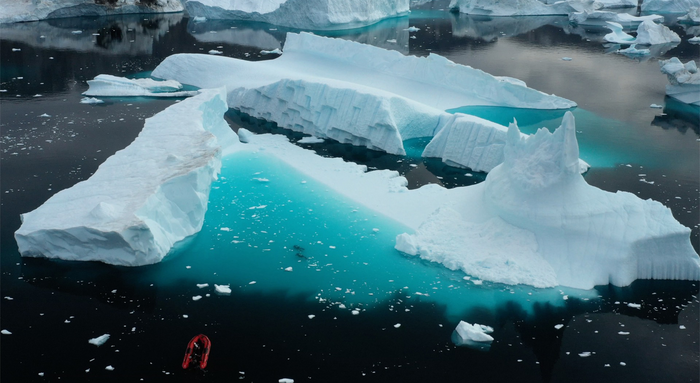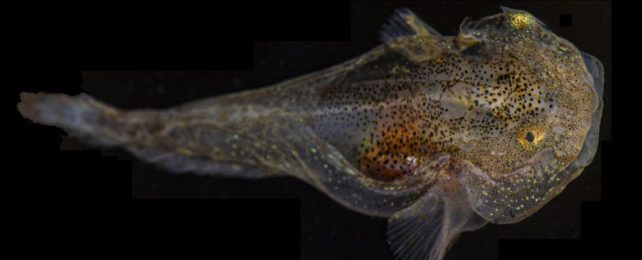In a bitterly cold bath of seawater, between the turquoise arms of a distant Greenland iceberg, researchers have caught an Arctic fish with a body highly resistant to freezing temperatures.
Off the coast of East Greenland, where this juvenile fish was caught, ocean currents regularly dip below 0 degrees Celsius.
These frigid temperatures are enough to freeze the blood of fish more accustomed to the tropics. But polar fish have a secret up their sleeves. Many have antifreeze proteins flowing through their veins.
When researchers sequenced the RNA of the Arctic fish, a variegated snailfish (Liparis gibbus), they found the species was packed to the gills with antifreeze proteins.
"Similar to how antifreeze in your car keeps the water in your radiator from freezing in cold temperatures, some animals have evolved amazing machinery that prevent them from freezing, such as antifreeze proteins, which prevent ice crystals from forming," says biologist David Gruber from the City University of New York.
"We already knew that this tiny snailfish, which lives in extremely cold waters, produced antifreeze proteins, but we didn't realize just how chock-full of those proteins it is – and the amount of effort it was putting into making these proteins."
The fish in question, L. gibbus, is also known as a polka-dot snailfish, named for the black spatterings found across its brown, flabby body.
On the surface, it's a pretty unremarkable species. But on the inside, it's full of surprises.

In 2019, a variegated snailfish was found glowing green and red – the first polar fish ever reported to biofluoresce, and the first example of a single species fluorescing in two colors.
Now, RNA sequencing has uncovered another secret of the snailfish.
Among all the thousands of transcripts sequenced in the Arctic species, researchers found a few transcripts that code for antifreeze-like proteins, all of which were highly expressed.
In fact, one transcript was among the most highly expressed of the bunch – way up in the top 1 percent.
In the field of genetics, a 'transcript' is an RNA copy of a part of DNA. It gives a cell instructions on how to produce certain proteins.
Such a high expression of antifreeze transcripts suggests snailfish put a premium on these proteins. They are probably crucial to survival in subzero temperatures.
Antifreeze proteins that bind to ice have been found in many other polar and subpolar fish, as well as some reptiles, insects and plants.
In fish, these liver-produced proteins are thought to stop ice grains from growing too large, or building up inside cells and body fluids where they could become obstructive.
The most highly expressed antifreeze-like protein in snailfish is relatively weak compared to other types of antifreeze protein, but it could still play an important role in keeping fish biology functioning.
The mix of weaker and stronger proteins could actually work together to provide snailfish with the temperature resistance they need to live in such bitter waters.
For instance, while some of the antifreeze proteins might not be powerful enough to keep ice grains in the blood from growing, they could help transport unsaturated lipids, which require specific temperatures when traveling through vessels.
As such, the authors say their findings among snailfish raise the possibility "that weak or combinatorial antifreeze activity could be beneficial" to Arctic fish.
At least, it's beneficial now.
"Since the mid-20th century, temperatures have increased twice as fast in the Arctic as in mid-latitudes and some studies predict that if Arctic sea ice decline continues at this current rate, in the summer the Arctic Ocean will be mostly ice-free within the next three decades," warns co-author John Sparks, a curator at the American Museum of Natural History.
"Arctic seas do not support a high diversity of fish species, and our study hypothesizes that with increasingly warming oceanic temperatures, ice-dwelling specialists such as this snailfish may encounter increased competition by more temperate species that were previously unable to survive at these higher northern latitudes."
That lonely Greenland iceberg may not be around in all its grandeur for much longer. Who knows what will happen to the fish swimming in its shadow.
The study was published in Evolutionary Bioinformatics.
